Latin name: Phlox
Category: heathers
Origin: North America
Phlox - winter-hardy flowers
Phloxes are popular flowers that perfectly decorate household plots, parks and squares. Perfectly fill a spectacular flower arrangement and fill the air with a delicate smell, thereby attracting butterflies and people. Scientists have created many excellent varieties that are popular with flower growers. Unpretentious flowering plants are most often grown and endowed with the ability of long and abundant flowering, one of these flowers is phlox.
Phlox flowers are popular for growing with gardeners. Plants are perennial and annual. The colors of annual phloxes consist of peach, chocolate, beige, white, coffee shades. Perennials contain a predominance of pink or crimson color. Annual phloxes contain an unusual flower structure resembling snowflakes. The structure of flowers in perennials is funnel-shaped, five-petalled.
Annuals contain only one variety - Drummond. They grow in a compact bush, branching shoots. Annual phloxes reach a height of 30 cm, and the dwarf variety has a height of 12 cm. The most popular varieties are large-flowered and star-shaped. Active flowering begins at the beginning of summer time and ends with the arrival of frost.
Cut flowers fill the room with a pleasant smell for a long time, as they are able not to wither for a long time. Phlox hibernate outdoors and do not require warming. Flowers are champions in the duration of flowering. A big plus of plants is a lot of different flowers and the height of the bushes is also very diverse. Thanks to these properties of phlox, there is a wide choice of the right flower to create a beautiful floral and plant composition.
Basically, phloxes are represented by herbaceous perennial shrubs. Plants contain straight and creeping stems up to one and a half meters long. The foliage has smooth edges, and at the end they are pointed, ovoid or elongated. Phlox flowers have a fibrous root system that has many branched roots growing from the main rhizome.
The penetration of the root system into the soil reaches 3-30 cm - one of the main characteristics of plants, in order to get good development, this should be taken into account.
Small-sized flowers from 2 to 4 cm in diameter have a funnel that looks like a long tube. Inflorescences are large, branched. In most cases, inflorescences have about forty flowers.
Propagation of flowers with our climatic conditions is done using seeds, but this method is not popular. Most often it is used to breed new hybrids.
Round or oval small boxes contain many seeds. Phlox perennials contain fewer seeds than annuals.
Creeping phloxes are the most favorite ground covers. They contain high winter hardiness and are unpretentious, and are also endowed with bright pink blooms.
Phlox types
The phlox family includes plants whose parameters are different. But the similarity lies in the structure of the flowers, consisting of beautiful panicles. Due to undemanding weather and growing conditions, they are very popular with professional florists and flower lovers.
Phloxes have a difference in shades of flowers, as well as distinctive features in the following parameters:
- Stem type: tall, short, creeping, dwarf;
- Duration of growth: annual or perennial;
- Time of planting and flowering: early or late;
- Flower size: large or small.
The charm and richness of phlox combinations allows you to give the flower beds a uniquely beautiful look thanks to a wide variety of color shades.
The annual phlox looks charming in a flowerpot or in a flowerpot. Flowers grown indoors in pots or flowerpots will also bloom, just like those grown outdoors.
Phlox subulate (Phlox subulata)
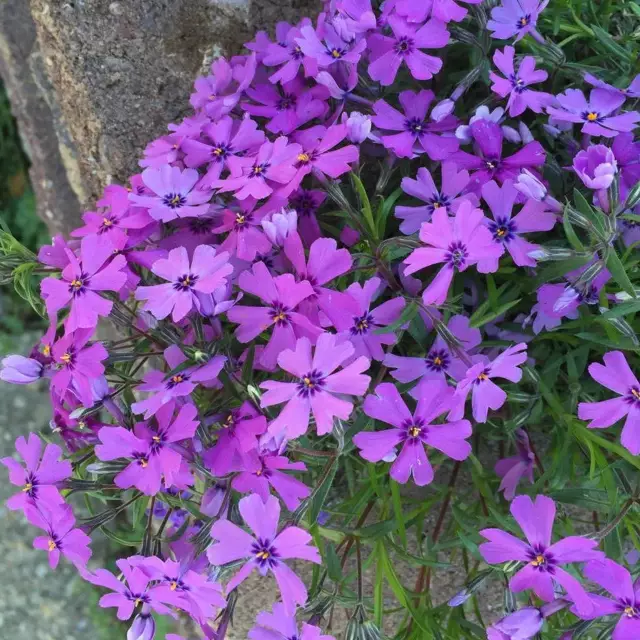 For rabatka and rock gardens, as well as giving a beautiful look to mixborders and flower beds, awl-shaped phlox is very suitable, as the main or background culture. These flowers are unpretentious in care and grow well with other plants, even on infertile soil. The species is frost-resistant and has green needles of leaves in winter. However, subsequently, to prolong the attractive appearance, the curtains are rejuvenated.
For rabatka and rock gardens, as well as giving a beautiful look to mixborders and flower beds, awl-shaped phlox is very suitable, as the main or background culture. These flowers are unpretentious in care and grow well with other plants, even on infertile soil. The species is frost-resistant and has green needles of leaves in winter. However, subsequently, to prolong the attractive appearance, the curtains are rejuvenated.
The plant is stunted in height of approximately 20 cm. It grows well in places with good lighting, growth is rapid. Excessive moisture and excess feeding harms plants. Top dressing with compost is most suitable for subulate phlox. Feed the plant should be with the first spring months and at the end of spring time.
Especially bright flowering occurs in May-June. Phloxes also bloom again from August to September. Phlox flowers are pink, lavender, lilac, crimson, red, purple, white and variegated.
The root system of phloxes is small and does not require a deep planting hole, 10-15 cm is also suitable. At the end of planting, you need to lay out the stems on the ground, spreading them out on the sides. It is necessary to plant bushes at intervals of about 30 cm from each other. After two years, a lush bright carpet of flowers is formed. A ground cover plant, without changing the place of cultivation, can grow for four to five years.
Creeping phlox is endowed with shoots with needle-like foliage. The location of the root system occurs almost on the earth's surface. When growing, the ground cover phlox forms thick and wide sods resembling emerald carpets.
Phloxes of this variety are creeping. They contain high winter hardiness and are unpretentious, and are also endowed with bright pink blooms.
Panicled phlox (Phlox paniculata)
 A plant of this species belongs to the best cultivated plants, which are grown in flower beds from spring to autumn. The flowers are not whimsical, frost-resistant and endowed with a beautiful and lush flowering with a delicate smell.
A plant of this species belongs to the best cultivated plants, which are grown in flower beds from spring to autumn. The flowers are not whimsical, frost-resistant and endowed with a beautiful and lush flowering with a delicate smell.
Panicled phloxes contain a variety of colors: scarlet, purple, violet, carmine. Also, plants have flowers containing dots, rims, eyes, shadow spots. The flower diameter is from 2.5 cm to 4 cm.
Scientists have bred a large number of species of this plant, the reproduction of which occurs vegetatively, using all parts of the bushes.
Original and beautiful paniculate phloxes are widely used to decorate landscape design, flower beds, parks and squares. Phlox paniculata prevail over many cultivated plants with a beautiful appearance. Many varieties make home gardens and parks original and attractive. Branched stems have the ability to grow rapidly.
Stolon Phlox (Phlox stolonifera `Ariane`)
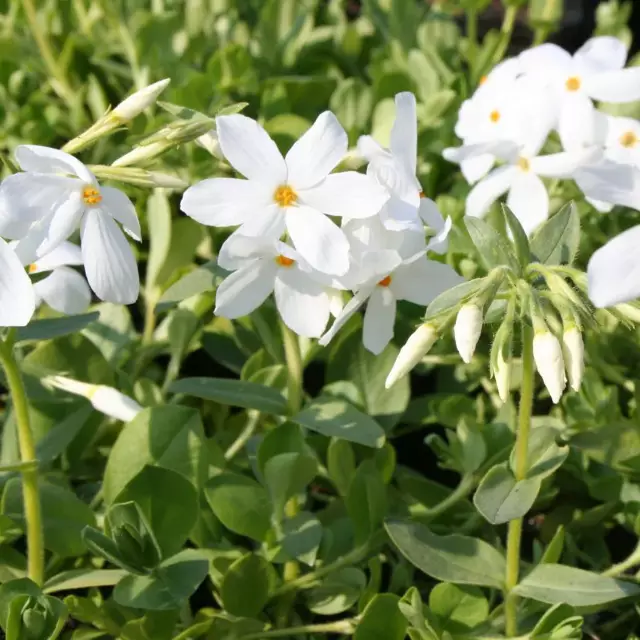 Plants bloom white flowers in rounded inflorescences. This variety is considered the best with white flowers. Branched stems have the ability to grow rapidly.
Plants bloom white flowers in rounded inflorescences. This variety is considered the best with white flowers. Branched stems have the ability to grow rapidly.
Low-growing perennial phloxes are called ground cover or creeping, due to low growth and growth in breadth. Perfect for growing close to rocks and rocks, as well as for creating a beautiful view of alpine slides. Undersized phloxes grow in height within 5-40 cm. Flowers contain shades of white, pink, lilac, blue.
Undersized phloxes consist of the following species:
- Styloid;
- Douglass;
- Northern;
- Dwarf;
- Multicolor;
- splayed;
- Snow.
Rare varieties of phlox:
‘Sherbet Cocktail’
This variety is the first bred with yellow petals. Reaches a height of 70 cm.
'Blue Paradise'
This cultivar has blue flowers in the early morning that turn purple when exposed to sunlight. The plant grows to a height of 120 cm.
‘Hesperis’
The variety contains lilac flowers and branched inflorescences. Plant height - 120 cm.
'Utopia'
Plants of this variety with purple flowers 160 cm high.
‘Swirly Burly’
This variety contains smoky flowers with purple strokes, and in the center there is a purple ring. Plant height 70 cm.
Rembrandt
 Perennial phlox paniculate with straight and strong green stems. Bushes grow up to one meter. The flowers are white in diameter 3.3 cm flat saucer-shaped. Flowering period July-August. Suitable for places with lots of sunlight. Diseases and frosts sustainably withstand.
Perennial phlox paniculate with straight and strong green stems. Bushes grow up to one meter. The flowers are white in diameter 3.3 cm flat saucer-shaped. Flowering period July-August. Suitable for places with lots of sunlight. Diseases and frosts sustainably withstand.
Terry phloxes, popular with flower growers. However, you don't see them very often. The smell of terry phlox is very pleasant and gentle. Flowers grow with a maximum height of 60 cm.
Types of terry phlox: Scarlet, Chanel, Magic, Bird's milk.
Phlox care at home
Growing phlox at home does not need special care conditions. It is recommended to transfer phloxes to the open air when the warm period of the year sets in. On young shoots, you should pinch the buds at the top so that there is good branching.
Dried flowers need to be cut off, thereby extending the flowering time.
Temperature
Room temperature - suitable for growing phlox. In autumn, it is necessary to place the plants in a cool place, as a dormant period begins.
Lighting
Window sills with good sunlight are a necessary place for the good development of phloxes. Plants should be placed in such a way that they receive a sufficient amount of direct sunlight, every day from 5 to 6 hours. However, you need shady places on hot summer days.
Priming
Phloxes should choose soil that is drained and with organic fertilizers, and an alkaline pH is also needed.
Fertilizers
During a period of active growth, it is recommended to feed phloxes with a complex fertilizer with a concentration reduced by half once a day month Plants love organic food.
Humidity
Phloxes need moderately high humidity, with low humidity brown spots appear on the foliage. It is necessary to spray the plant periodically during the week. Also spraying phlox, it is possible to avoid damage by pests - spider mites.
Watering
Regular watering with active growth and flowering will have a beneficial effect on the plant. Drying of the topsoil should be negligible. In autumn, the frequency of watering is recommended to be reduced.
Transfer
Perennial phlox should be planted in new soil once a year. The root system of plants is shallow, so they need to create cramped conditions. When transplanting, due to this quality of phlox, it is recommended not to rush to choose a larger flowerpot than it was before.
Diseases and pests of phlox
Viral diseases cause great harm to a flower bed and can spread to other crops. Sick phloxes are not subject to treatment, but are removed with the root system and the ground. There are such viral diseases:
Ring spot - light spots appear on the foliage, if no action is taken, the spots cover the entire green mass. Foliage twists and deforms. The appearance of the virus is considered ringed tomatoes, and its carrier is nematodes.
Necrotic blotch - small brown spots appear on young foliage. With the development of the disease, the spots completely cover the foliage. The cause of the virus is cucumber mosaic.
The virus often affects dahlias, gladioli, delphiniums.
Wrinkling or curly foliage - green or black spots appear on the leaves. When the virus is damaged, the stems are deformed, the phloxes weaken. The cause of the appearance of the virus is considered cucumber mosaic or necrosis of the veins. Spread occurs by soil fungus.
Variegation - white stripes appear on the leaves, their shape is deformed, the flowering time is reduced. Varieties with light flowers infected with the disease may not be visible. The cause of the appearance is the mosaic virus, and the causative agent is nematodes.
The prevention of such diseases is to check the soil for nematode content. If pests have been found, it is necessary to neutralize the soil with the help of chemicals Nemagon, Chlorpicrim, Carbation. The infectious disease can also be transmitted to garden tools, fallen buds, cuttings, leaves of infected phlox.
It is recommended to inspect planted flowers and identify symptoms of infection with viral infections - destroy infected plants. Places of dug holes will be neutralized with chemicals and covered with clean earth.
When replenishing the collection of flowers, it is recommended to place them in a quarantine area in order to determine if they are infected or not, which will create an opportunity to protect other plants.
Fungal diseases
Rust of leaves - the appearance of rusty spots on the leaves, later they die off. With the disease, phloxes become weak. Plants of dark varieties are more often affected.
With the defeat of phlox foliage and if significant damage, then the entire plant must be burned. To protect the soil and surrounding plants, Bordeaux liquid 1% is used, and chlorine, copper oxide 0.7%, iron sulfate 3% are added to it.
Leaf spotting - gray spots appear, over time they become larger and turn yellow, then a red border forms. When infected in a large volume, the foliage fades.
To help plants, drugs are used, as well as for the treatment of rust.
Powdery mildew - the appearance of white spots on phlox. Then they become larger, and the leaves dry out and die off. The cause of plant infection is dense planting with high humidity. Also, the presence of a lot of nitrogen fertilizers in the soil contributes to the disease.
To get rid of the disease, soda ash 1% is used, the solution should be sprayed with phloxes three times with a break for a week. Boric acid, which is used for foliar feeding, is excellent for treating plants. It is necessary to take hot water and dissolve half a teaspoon of acid in it. Next, the solution should be diluted in ten liters of water and water the plants.
Phomosis - the foliage turns yellow and curls, it is darker than the stems, while it is covered with cracks, the plant becomes brittle.
To help phlox, you need to spray them with Bordeaux liquid three times a month with a break of ten days. When autumn comes, it is recommended to prune near the roots and remove the trimmed parts of the plant.
Plant pests - nematodes, slobbering pennitsa, slugs, caterpillars.
Nematodes - hair parasitic worms. When plants are damaged, the foliage becomes wavy, the stems are bent, and the inflorescences are deformed.
It is recommended that the bushes affected by the pest be dug up and destroyed together with an earthen clod. With the defeat of phloxes, the foliage should be partially cut off. Next year it is recommended to make doomed shoots and washed b water, then plant under the film, and remove the bush. Plants are grown in a quarantine plot and observed for growth.
Slobber pennitsa creates stickiness in the form of saliva. There is a development on the leaves of larvae that drink juice from plants, as a result of which the leaves curl.
With a slight infection, the foliage must be cut off. If a very global lesion has occurred, it is necessary to treat the plants with Fufanon or Inra-vir chemicals.
Slugs eat the plant. In the daytime, slugs hide, crawling under stones, and in the evening they crawl onto phloxes.
A pest prevention measure is loosening the soil and sprinkling with tobacco, ash.
You can also spray the plant in the evening with two tablespoons of diluted ammonia per liter. Metaldehyde is also used to control the pest, scattering 30g over a plot of 10 square meters.
Caterpillars and cabbages harm plants by eating leaves and stems.
An effective means for pest control is hand picking. With a large lesion - spray with chemicals to combat leaf-eating insects.
Difficult Growing Moments
The leaves dry up and fall off - lack of moisture, summer transplantation. It should be watered regularly, spray the ground part and shade the phloxes.
The stems crack - lack of watering during hot and dry summers or watering with very cold water in hot weather, dense planting of flowers, an excess of nitrogen fertilizer. It is necessary to prevent dense planting, excessive amounts of nitrogen, water the plants in the evening. Build fences for high varieties of phlox.
It is not recommended to plant phloxes densely, as there will not be sufficient ventilation for the plants, and such planting also contributes to the rapid spread of pests and infections, while preventive measures are difficult.
By observing the correct care for growing phlox - loosening the soil, weed control, annual top dressing with humus in the spring, as well as top dressing with liquid urea fertilizers. During the summer period, fertilizing with nitrophoska is necessary, and ash should be fed at the end of flowering. As a result of competent care, phloxes will delight with beautiful flowering. Good luck growing beautiful flowers!




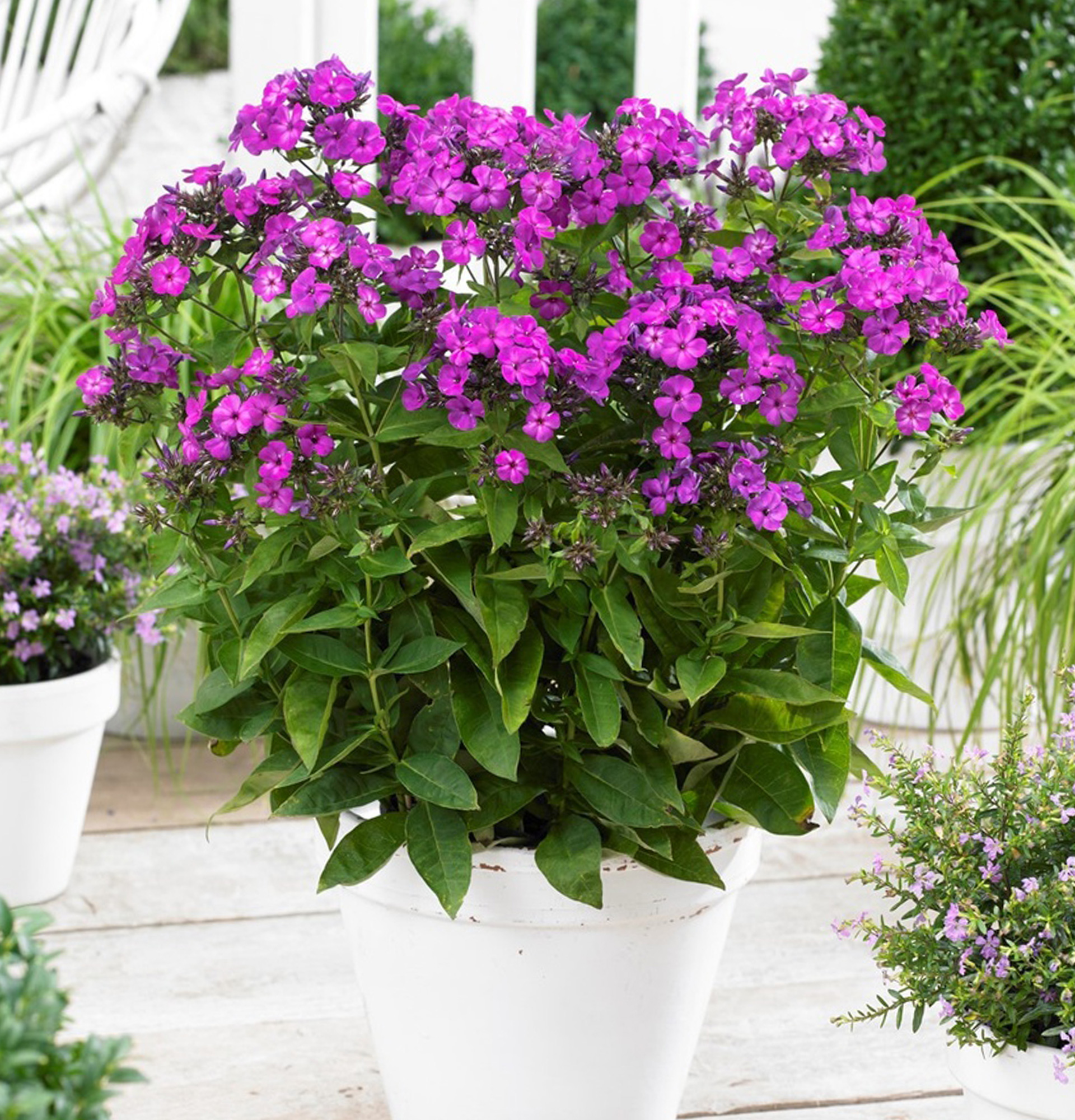











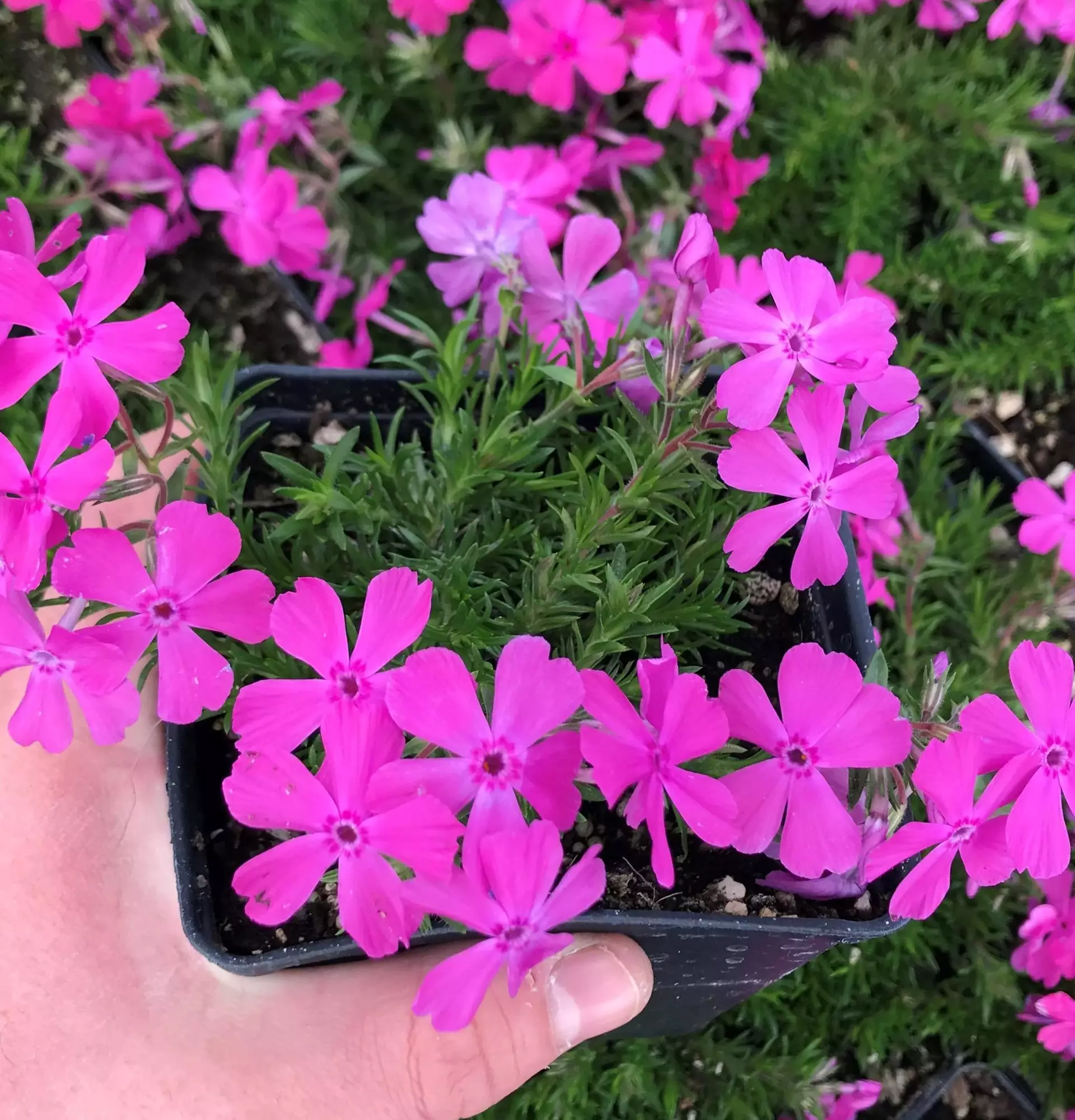
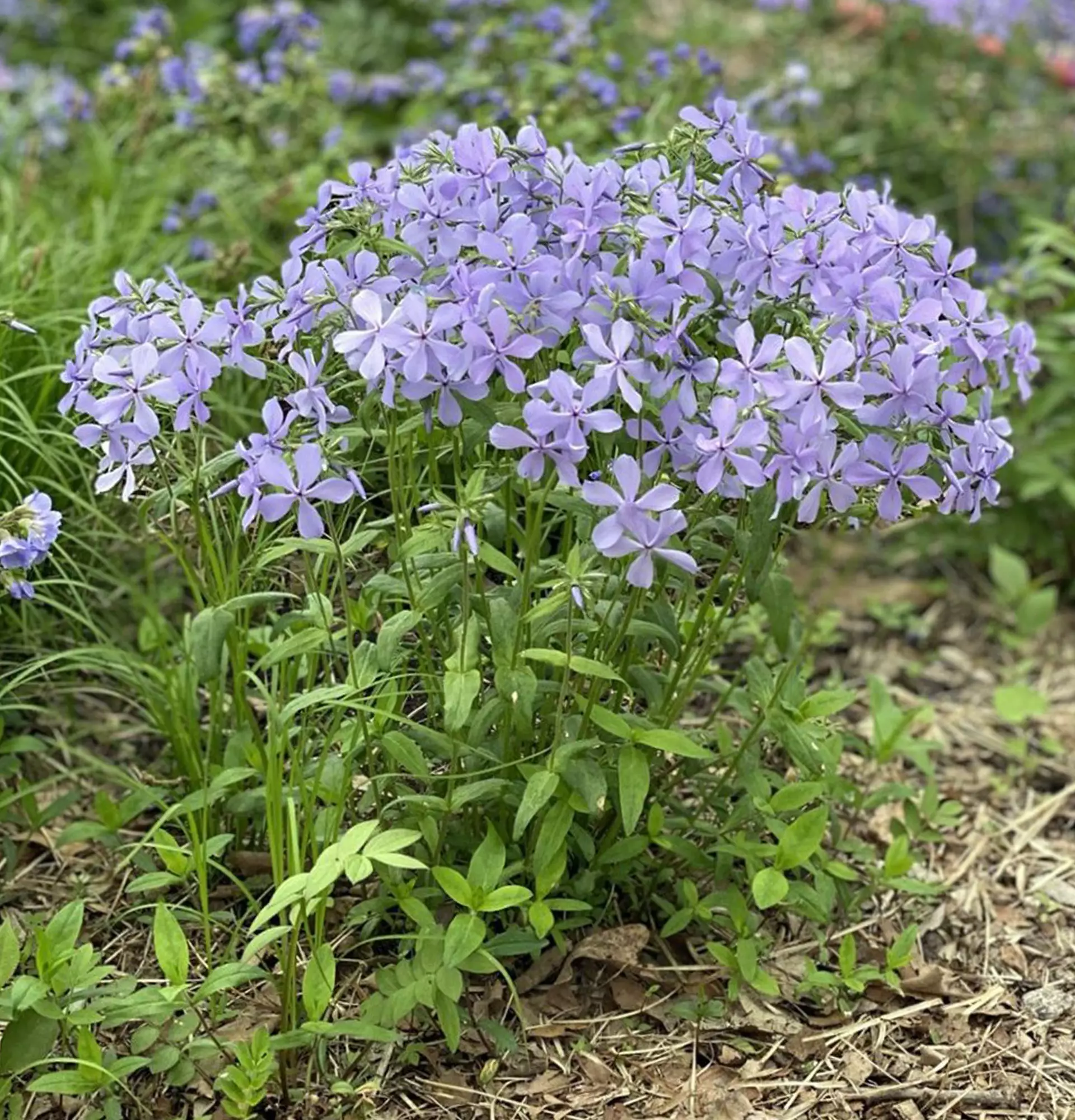
Write comments
Comments